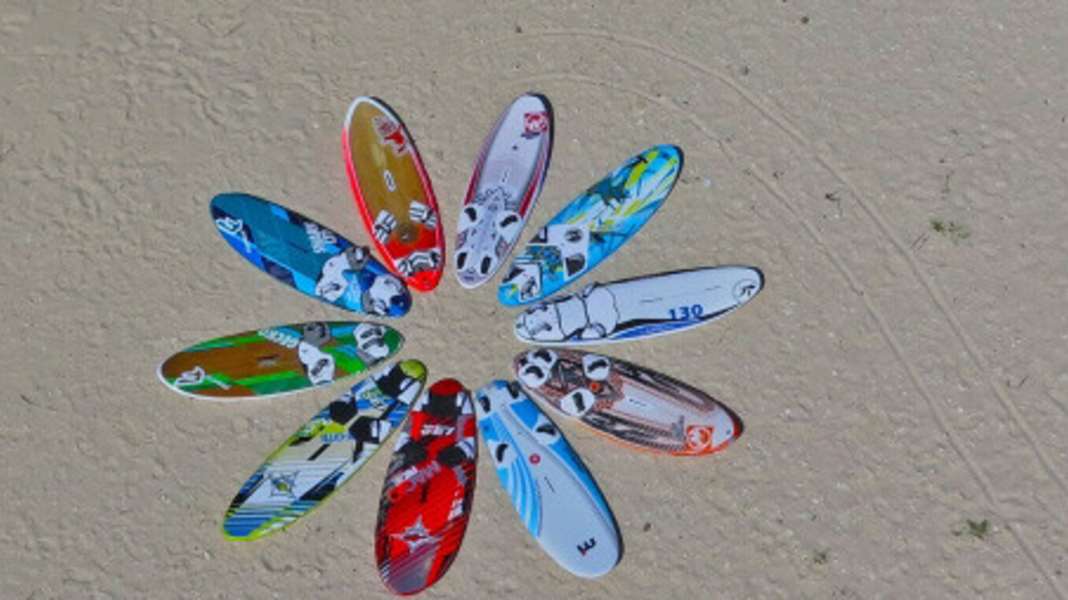
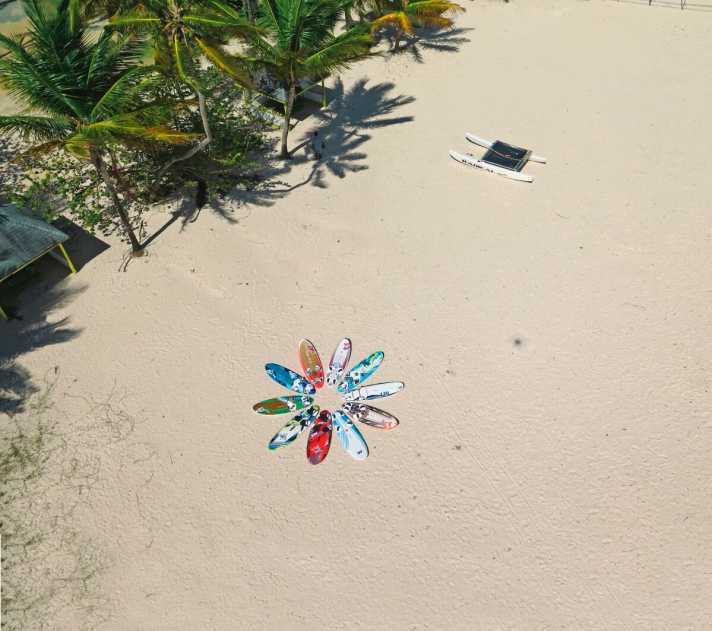
It doesn't matter whether the model is up-to-date or which brand it comes from - the only important factors are "board type", "condition" and, of course, "price".
Which type of board?
There are countless board types on the market with designations such as freeride, freemove, wave, slalom, freestyle, etc.. These terms refer to the recommended area of use. We explain the differences between the individual board classes in a simple and easy-to-understand way in our Windsurf Board Guide .
Experienced windsurfers choose their board to suit their intended area of use - wave boards for waves, freestyle boards for tricks and slalom for the race course. The following applies to beginners and intermediates: board classes such as wave, slalom or freestyle are less suitable for newcomers! The following board classes are suitable for beginners and intermediates who have completed the basic course: longboards, freeride boards and windSUPs.
Board type"Longboard"
The best board type for low wind and flat water use. Longboards have a centreboard that minimises drift, and they also run fast and have good height even in light winds - ideal if you mainly want to cruise on inland lakes and practice in a relaxed manner! As always, the decisive factor is the volume; the rule of thumb for intermediates is:
Body weight + (80 to 110) = ideal board volume
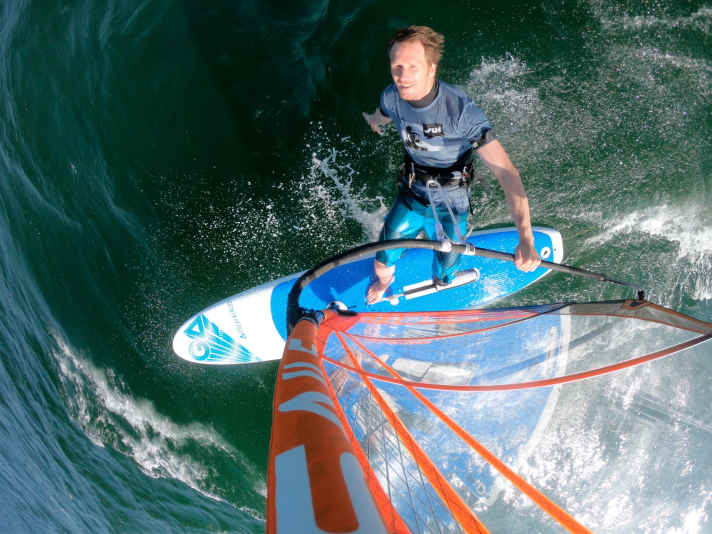
The better or more experienced you are, the smaller the board can be - even a board with only 50-70 litres of excess volume can be easy to ride. However, if you mainly go on the water in light winds, a board that is too small makes no sense, even if you are an experienced surfer.
WindSUPs:
Another alternative for light winds are inflatable windSUPs, known as "inflatables". These are very similar in shape to longboards and can be easily stowed away in a rucksack after use. This type of board can be used for stand-up paddling (SUP) and - if they are equipped with a windsurfing option (i.e. a thread in the deck into which a mast base plate can be screwed) - also for windsurfing. As the sport has spilled over from America to Europe, the measurements are given in feet and inches.
Boards between 9'5'' (9 feet, 5 inches) and 11'6'', which corresponds to around 3.00-3.50 metres, are ideal and have sufficient volume.
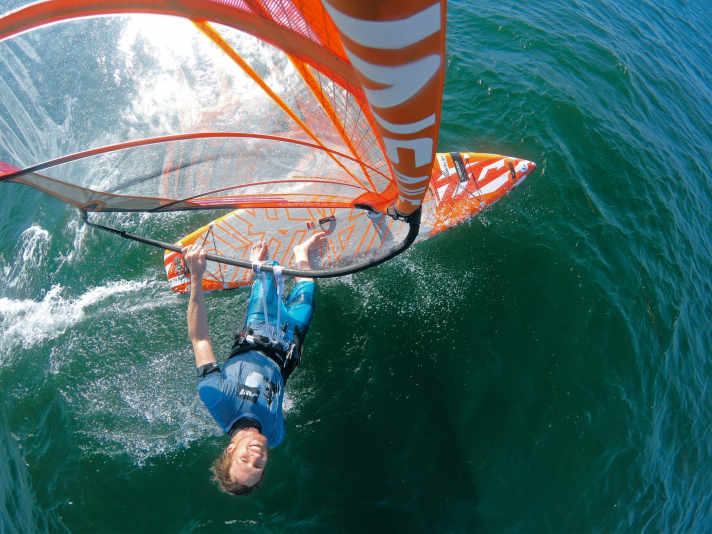
Please note: Boards without a centre fin or daggerboard are absolutely unsuitable for windsurfing (!) because the lateral drift is too great in light winds. WindSUP boards, on the other hand, are ideal if you have a storage and transport problem and as a family board for light winds.
Freeride boards:
Freeride boards are boards without a centreboard, which are generally designed for gliding. They primarily have advantages when planing due to their higher speed. This type of board is ideal if you already know how to harness surf and planing and mainly go out on the water at spots where the wind regularly blows at more than 12 knots.
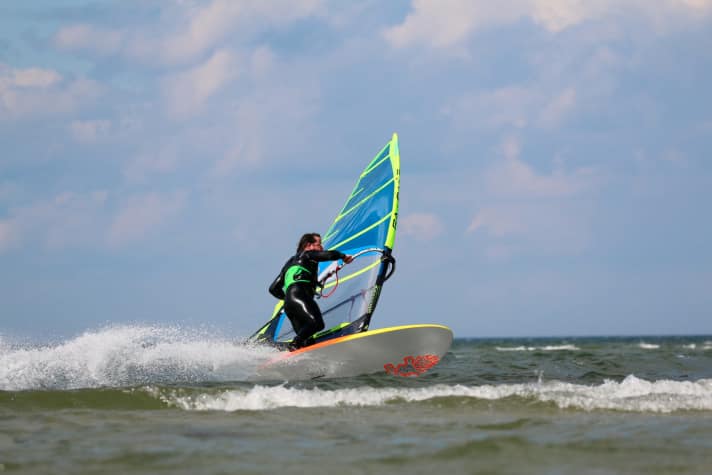
The same applies here: a board that is too small is a real fun killer! If you have not yet mastered the water start, your freeride board should also have at least 50 litres more volume than your body weight so that you can start safely and practise your manoeuvres.
Condition & age of boards
A board that is ten years old may be in top condition and much more suitable for you than a brand new board of the wrong category or size (e.g. with too little volume). Pay attention to the following points:
Holes & cracksThe decisive factor for boards is whether they have cracks or holes through which water can penetrate. Damaged areas need not be a problem as long as they have been professionally repaired and the board has not absorbed water.
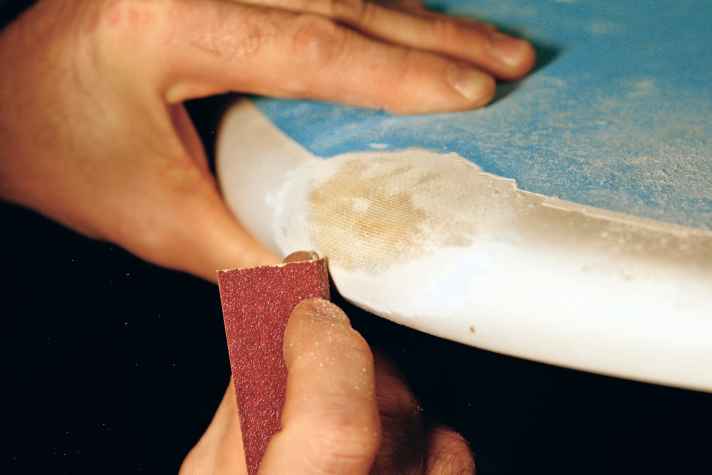
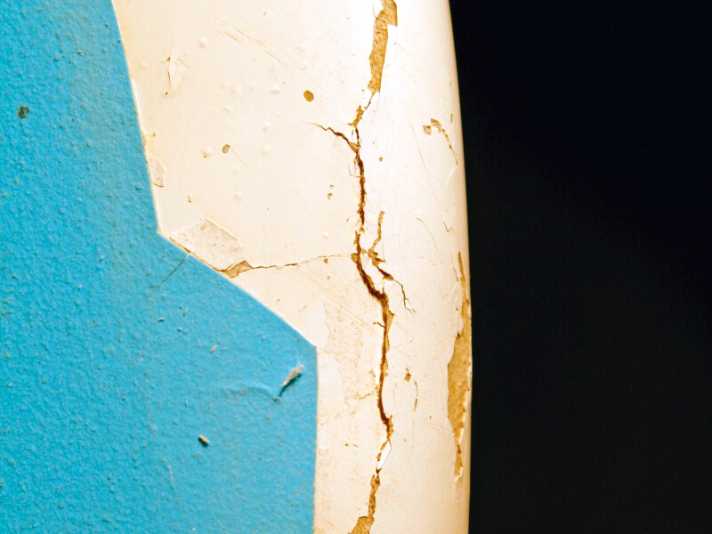
Soft spots: Older boards sometimes become soft and can then tear in the affected areas and draw water. Before buying, lay the board on the ground and firmly press the areas between the foot straps up to the mast track with both thumbs. If the deck is soft, leave it alone or press the price. If everything is hard, it will hold.
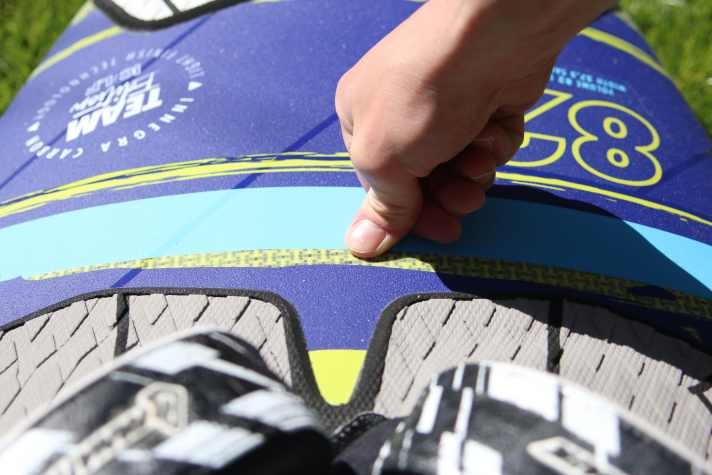
Bow areas: The bow areas of boards are often badly affected because the mast regularly hits the nose of the board - especially when you are learning to harness surf and produce the inevitable "skidding falls". Inspect this area in particular before buying. Irregularities in the design or deviations in the paintwork may indicate repairs. If carried out professionally, this need not be a problem, but should be reflected in the price in your favour. surf tip: An inexpensive, self-adhesive nose guard made of thick foam ensures that your board survives these practice phases unscathed - available in well-stocked surf shops from 40 euros.
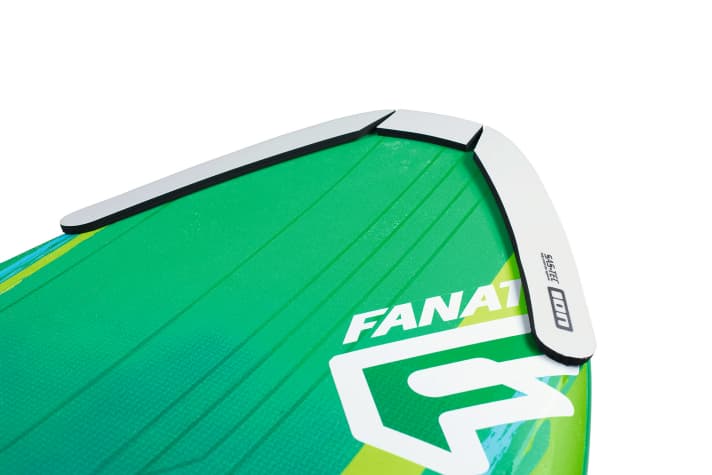
Mast rail: The board must have a mast track in which a mast foot plate can be mounted. Very old models often require a special mast base system that is no longer compatible with many sails and for which there is no longer a replacement available.
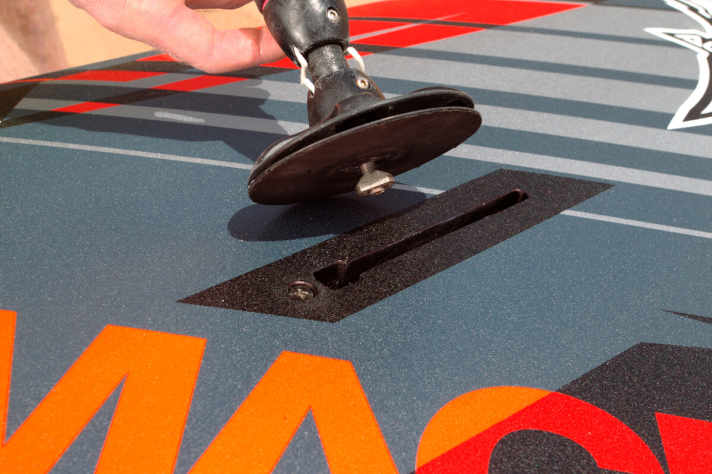
You can find a guide to repairing boards here :
Stand varnish: Used boards are often quite slippery, as the applied base coat wears off over time. This does not have to be an exclusion criterion for buyers, as the varnish can be renewed within 30 minutes even without experience. You can find out how to do this in detail here:
Boards - Marketplaces & Prices:
The prices of intermediate boards vary depending on their condition and season. Boards that are one season old usually sell for 50 per cent of the new price - but depending on the model, this can still be between 600 and 1000 euros. A model that is three to five years old can usually be bought for 400 to 600 euros, while even older boards often change hands for less than 300 euros. But again: age plays a subordinate role, the important thing is that the size and board type are right!
surf tip: boot-Düsseldorf, which always takes place at the end of January, is a real bargain fair! Many surf schools also swap equipment at the end of the season, giving you the opportunity to try out the equipment before you buy it.
Otherwise, we have put together some useful links for you below to help you find your first used board. Of course, you can also find suitable offers on eBay & Co.
Surfsport.de: www.surfsport.de
Facebook group "Surf material": https://www.facebook.com/groups/248607815156286/forsaleposts/?referral_surface=group_mall_header_nav&availability=available

